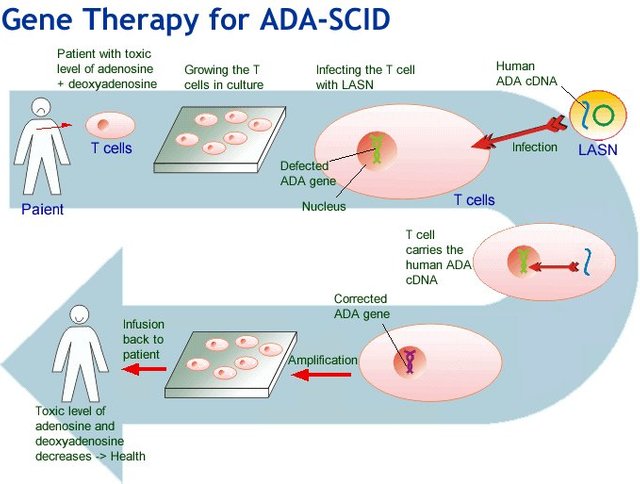Gene therapy's first approved cure is coming, the question is: How much will it cost?
SCID is also known the "bubble boy" disease. Born without a functioning immune system, children with SCID mutations can expect to live shortened lives filled with isolation, risky bone marrow transplants, and painful injections. If treatment is successful, SCID children can live to adulthood. If not, the resulting scarring and damage to organs can result in a very early death. And yet the genetic error that leads to this disease is often a simple mutation in a single "ADA" gene.

Now GlaxoSmithKline (GSK) has been approved to sell a cure for this disease in the form of gene therapy. This is the first time an ex-vivo gene therapy will be approved, and will likely become the standard of care for the disease.
Gene therapy represents a new treatment paradigm. Using viruses to deliver genetic payloads, patients with genetic disorders can have the defective regions of their DNA repaired, replaced or otherwise corrected. Done right, this represents a true "cure" - a word rarely used in modern medicine, because the cells will continue to function correctly over time.
Avigen was an early player in the gene therapy space. I invested in Avigen more than 10 years ago, and followed closely as it boomed and busted. Gene therapy proved more difficult than originally thought. Apparently the body can mount a vigorous immune response both against viral vectors, and, in many patients, this prevents the cure from being delivered.
Today, a new technique, called "ex-vivo" gene therapy, appears to be a success. Treatment involves removing stem cells from the body, treating them for the genetic disease, and re-implanting them. These modified stem cells, long lived and dividing rapidly, then produce corrected versions of the patient’s defective proteins. This method is safer because the genetic treatment occurs in a controlled, monitored environment - free of immune response and subject to rigorous testing before re-implantation.
It's been over 10 years since the treatment was first developed - a testament to how difficult the regulatory environment is for gene therapy. Glaxo's treatment, Strimvelis, received a favorable opinion in April by the European Medicines Agency, and trial results just released have been impressive, with 15 intervention-free children attending school.
The ugly question on the table is: how much do you charge for such a dramatic cure? ADA-SCID patients that fail transplants receive expensive injections for the rest of their lives. Many die. Almost none of them live what we would consider “normal” lives.
In 2012, a similar generic treatment called Glybera was priced at $1 million. It too provided a "one shot cure" for a rare, debilitating disease. But the drug has been called a commercial failure, largely because the up-front payment is not a guarantee of success and insurers don't want to bear the cost now for a patient that will not be insured by them in a few years.
All of which leads to the question: if a child fails a bone marrow transplant, what should Glaxo charge for what amounts to the only chance they have at life?
In my opinion, the best method proposed has been "pay-for-performance". By tracking patient outcomes, this model rewards drug companies for maintaining patients’ health over a period of time. Tracking and verifying health metrics, issuing invoices, and collecting payments in this model will become an important business for the medical billing industry. Insurance companies would then pay for this continued care... with liability passed to later insurers - rather than being incurred by the initial insurer.
Perhaps the hope for cure to this and thousands of other genetic diseases is not really in the hands of researchers. The technology is here, it works and has been proven. It's the financial, insurance, regulators and medical billing companies that have to come together to make gene therapy a reality.

.
Congratulations @simul! You have received a personal award!
_Click on the badge to view your Board of Honor.
Downvoting a post can decrease pending rewards and make it less visible. Common reasons:
Submit
Congratulations @simul! You received a personal award!
You can view your badges on your Steem Board and compare to others on the Steem Ranking
Vote for @Steemitboard as a witness to get one more award and increased upvotes!
Downvoting a post can decrease pending rewards and make it less visible. Common reasons:
Submit